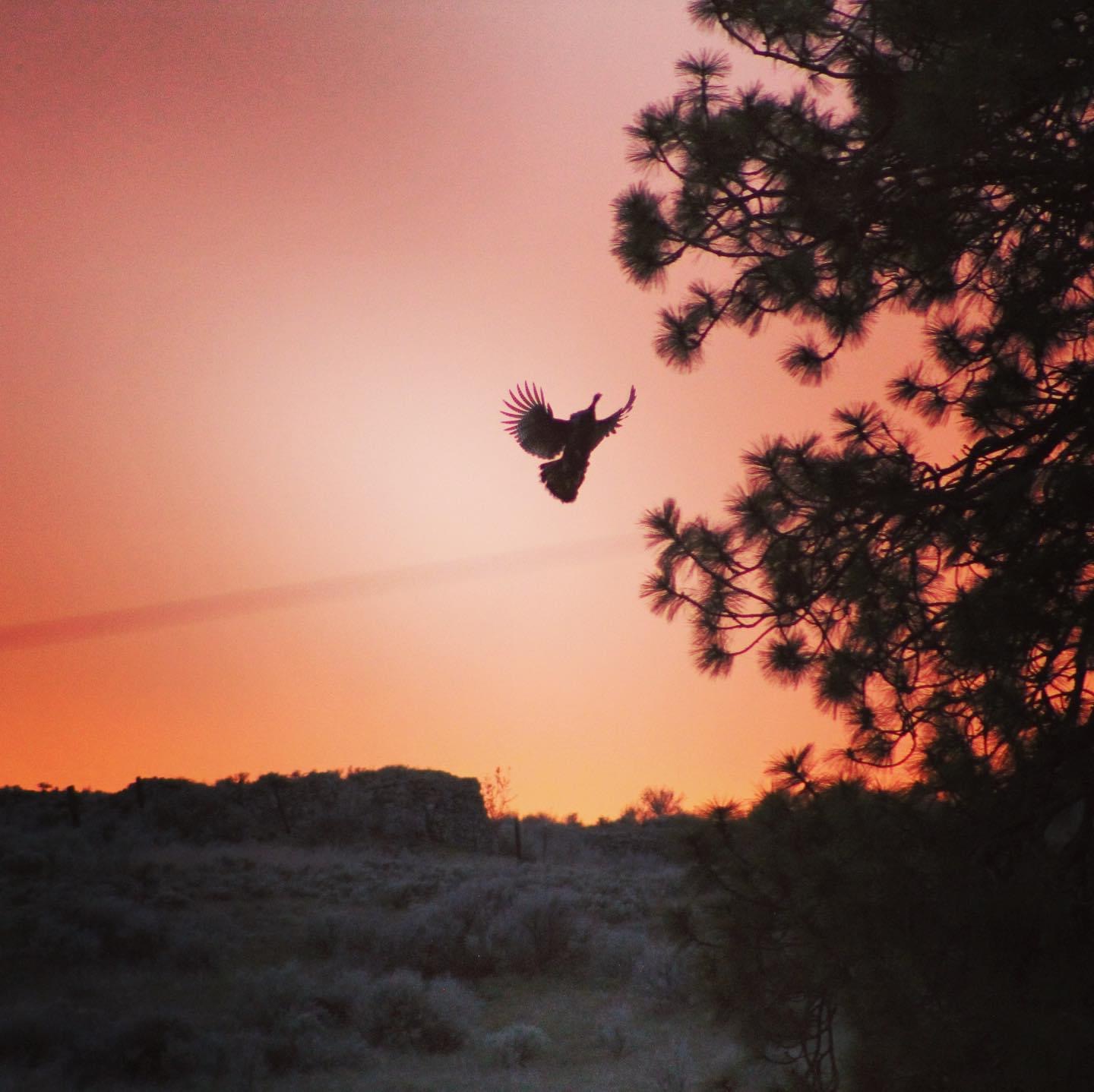
Chapter 4 – April 27, 2023
Turkey skills: The art of roosting turkeys
Finding the right spot to position yourself for success
By Tom Ryle/WDFW
With wild turkey hunting season in full-swing, we wanted to dive into the ever-important topic of roosting turkeys.
As we’ve mentioned in previous Turkey Takeover posts, locating turkey roosting trees is a great way to inform your hunting strategies. Why? Because each evening, regardless of the day’s events and meanderings, turkeys will huddle up in their small groups and ascend into the trees for the night. Often, they will return to the same tree(s) or same general location each night.
It’s a good practice to be in the woods in the early morning hours and evenings to listen for chatty flocks as they fly down in the morning and as they move toward their evening roosts.
Turkeys fly up into trees to roost at night to avoid most predators and enjoy protection from harsh weather conditions. Then shortly after dawn, they will fly down to resume their daily activities of feeding, dusting, breeding rituals, and for hens, spending time nesting in secluded locations.

A wild turkey flies up to a tree to roost at sunset in Lincoln County. Where possible, turkeys prefer to use slopes and ridges to make these evening flights easier. (Shereen Warwick)
The night shift
A common practice among veteran turkey hunters, especially when hunting new areas, is to locate roosting birds after sundown by driving or walking roads trying to entice a shock-gobble from roosted toms. Male turkeys will gobble to sudden, loud sounds, so use locator calls, such as owl hoots, crow calls, peacock calls, or coyote howls. Even the bark of a farm dog or slamming a truck tailgate will cause toms to sound off.
Once a general roost location is identified, the objective is to slip in quietly under the cover of darkness in the morning and set up nearby before they fly down. As you approach, toms will likely already be gobbling from the roost, allowing you to adjust your path and not get too close. Remember, turkeys have incredible eyesight and being perched in a tree, they have the advantage of picking you off if you try to get too close. The goal is to entice a gobbler to come find you — lured in by subtle hen sounds or a well-placed decoy — once he pitches down.
Reading the signs
Another way to locate roost trees is simply stumbling onto them during your hunt. Roost trees will often have a lot of droppings around the base of the tree along with random feathers, as birds use roosting time before and after sleep to preen themselves. If you see these signs, look up and evaluate the tree and adjacent topography. Is there a likely flight path into and out of the tree? Is there a feed area nearby or a water source? Is the area on the leeside of the prevailing wind direction to provide more shelter? These other features can be useful clues as well.
Yet another way to locate likely roosting locations is to identify places that provide turkeys easy fly-up and fly-down access to open-limbed trees. These are typically trees with bare, sturdy limbs that make it easy to land on and position themselves for the night by hopping from limb to limb.
What to look for
To illustrate these points, check out this video I shot during a recent hunt. It will provide a good overview of an ideal roosting site. Think of this as a textbook template for what to look for while in the field.
Remember, once a roost tree is located, plan your hunting setup to focus on areas near where the turkeys will fly down and land, or where they naturally want to go after they hit the ground. If turkeys move off away from your setup, take note of where they go. Then that evening you can see if they roost in the area again. If so, then you have a good chance of intercepting them on your second setup.
Good luck and please share photos of your successes with us!



